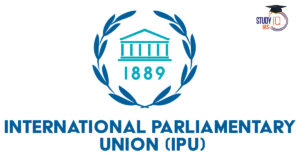Table of Contents
Square Kilometre Array Observatory (SKAO)
Context: Indian scientists are set to join the Square Kilometre Array Observatory (SKAO), which will function as the world’s largest radio telescope.
About Square Kilometre Array Observatory (SKAO)
| Aspect | Details |
| Origin | Formed as an intergovernmental organisation in 2021 after extensive negotiations with participation from multiple countries, including India. |
| About SKAO | An international radio telescope project consisting of thousands of antennas situated in the radio-quiet regions of Australia and South Africa. |
| Headquarters | United Kingdom. |
| SKA-India Consortium | A group of engineers and scientists from over 20 leading research institutions such as the National Centre for Radio Astrophysics (NCRA) and the Aryabhatta Institute of Observational Sciences. |
| NCRA’s Achievement | Recognized for the construction and operation of the Giant Metre wave Radio Telescope (GMRT), entrusted with responsibilities within the SKA project. |
| SKA Telescope’s Significance | Aims to explore fundamental astronomical questions including the universe’s inception, formation of the first stars, galaxy life-cycles, the search for extraterrestrial technology, and the origins of gravitational waves. |
| India’s Role | Tasked with developing and managing the Telescope Manager component, the central software or “neural network” of the SKA. |
| NCRA’s Contribution | A part of the Tata Institute of Fundamental Research, operating the Giant Metrewave Radio Telescope (GMRT) near Pune, which is India’s largest radio telescope network. |
| International Collaborators | Includes countries such as the UK, Australia, South Africa, Canada, China, France, India, Italy, and Germany. |
We’re now on WhatsApp. Click to Join
Domestic Systemically Important Banks (D-SIBs)
Context: Recently, the Reserve Bank of India (RBI) issued the list of Domestic Systemically Important Banks (D-SIBs).
About Domestic Systemically Important Banks (D-SIBs)
- The system of D-SIBs was adopted in the aftermath of the 2008 financial crisis where the collapse of many systemically important banks across various regions further fueled the financial downturn.
- D-SIBs are banks whose potential collapse could significantly disrupt the broader financial system because of their large scale, international activities, intricacy, irreplaceability, and network of connections.
- These banks are often labelled as ‘Too Big to Fail‘ due to their significant role within the financial system.
- The Reserve Bank of India released a framework for D-SIBs in 2014, which came into effect in 2015.
- Since 2015, the RBI has been releasing the list of all D-SIBs. They are classified into five buckets, according to their importance to the national economy.
- The RBI categorises these banks based on their Systemic Importance Scores (SISs) and mandates additional equity requirements for them based on their assigned category.
- Foreign banks operating in India that are identified as Global Systemically Important Banks (G-SIBs) are required to maintain an additional Common Equity Tier 1 (CET1) capital surcharge, which is proportional to their Risk Weighted Assets (RWAs) in India.
Maharishi Valmiki
Context: The Prime Minister inaugurated the newly constructed Ayodhya Airport, naming it Maharishi Valmiki International Airport.
About Maharishi Valmiki
| Aspect | Description |
| Title | Adi Kavi (First/Original Poet) |
| Notable Work | Composed the Ramayana, a seminal epic in Sanskrit literature |
| Ramayana’s Composition | Contains 24,000 verses, divided into 7 kandas (books), detailing Lord Ram’s life |
| Personal Appearance in Ramayana | Appears in the Bala and Uttara Kandas of the Ramayana |
| Valmiki Jayanti | Celebrated as the birth anniversary of Maharishi Valmiki, known as Pargat Diwas, observed on the full moon day of the Hindu month of Ashvin (September-October). |
Devika – North India First River Rejuvenation Project
Context: The ‘Devika’ project, North India’s first river rejuvenation initiative, is nearing completion and will soon be inaugurated by the Prime Minister.
About River Devika Project
| Feature | Details |
| Inspiration | Modelled after the ‘Namami Ganga’ project |
| Launch Date | February 2019 |
| Location | Along the Devika River in Jammu and Kashmir |
| Association | Part of the National River Conservation Project (NRCP) by the Government of India |
| Development Goals | Includes construction of bathing ghats, removal of encroachments, restoration of natural water bodies, development of catchment areas, and a cremation ground |
| Infrastructure | Consists of three sewage treatment plants (capacities: 8 MLD, 4 MLD, 1.6 MLD), a 129.27 km sewerage network, development of two cremation ghats, protection fencing, landscaping, small hydropower and three solar power plants |
| Project Cost | Over Rs 190 crore with funding shared in a 90:10 ratio between the centre and the UT |
| Expected Outcomes | Aims to reduce pollution, improve water quality in the river |
| Tourism and Utility | Designed to attract pilgrim and recreational tourists, and to serve as a state-of-the-art cremation centre |
About Devika River
- Origin: The Devika River begins at the Suddha Mahadev temple in the Udhampur district, Jammu and Kashmir.
- Course: It flows towards western Punjab (currently part of Pakistan) and joins the Ravi River.
- Current State: The river now flows beneath its sandy surface.
- Religious Importance: Devika River is revered as the sister of the holy Ganges, holding significant religious value.
- Historical References: It is mentioned in ancient texts like the 7th-century Nilmat Puran, written by Nela Muni, and also in Devi Mahatmya.
- Cremation Beliefs: Cremating on Devika’s sands is believed to be as auspicious as cremation along the Ganges in Kashi.


 SAMARTH Udyog Bharat 4.0: Transforming I...
SAMARTH Udyog Bharat 4.0: Transforming I...
 BHIM 3.0 Launched by NPCI: Key Features,...
BHIM 3.0 Launched by NPCI: Key Features,...
 150th Summit of Inter-Parliamentary Unio...
150th Summit of Inter-Parliamentary Unio...





















